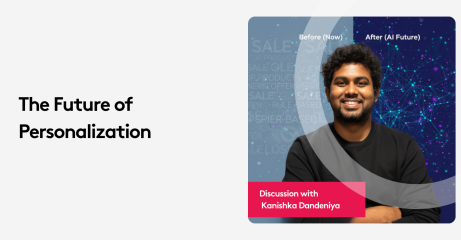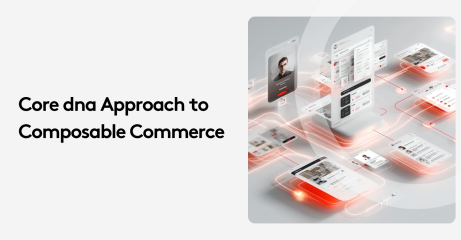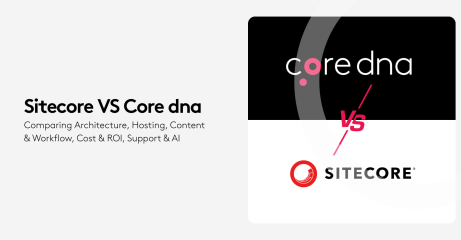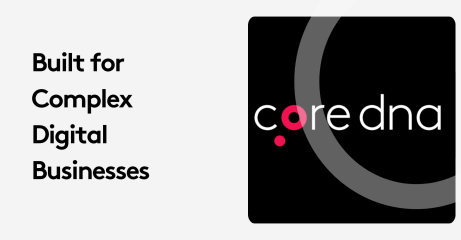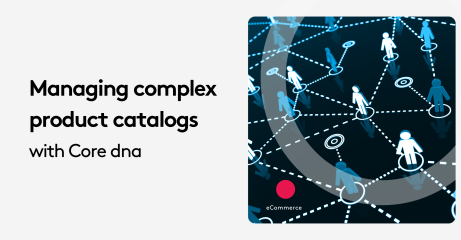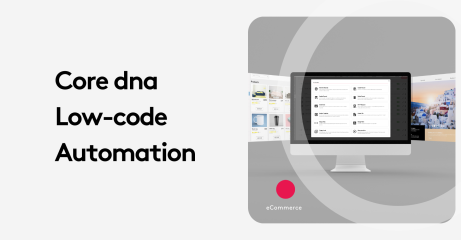Why Most Ecommerce Promotion Strategies Fail

Many brands follow the same playbook—and wonder why it doesn’t work. Learn how to avoid common pitfalls and build a strategy that converts.
For the vast majority of consumers, discovering discounts, coupons, and other deals is an integral part of the overall shopping experience.
Case in point, Hawk Incentives found that 97% of consumers (eCommerce and otherwise) say they look for deals as they shop—with 92% saying they are always on the lookout for promotional offers. Backing this data up, PRRI found that 92% of consumers used a coupon or otherwise took advantage of a discount or offer in 2017.
In this guide, we’re going to dig deep into the best practices for creating an effective promotional campaign that spurs engagement and conversions — and leads to major growth for your brand.
Key takeaways
- Discounts & Coupons Drive Results: Strategic use of offers boosts conversions, attracts new customers, and improves retention—but they must be used wisely to avoid shrinking profits or brand value.
- Know the Pros & Cons: Discounts increase sales and customer loyalty but can also lower profit margins, attract one-time bargain hunters, and harm perceived product value if overused.
- Plan Your Promotions Carefully: Effective campaigns require targeting the right audience, timing offers strategically, setting clear terms, and managing how discounts can stack or scale.
- Follow Best Practices: Define clear goals, segment your audience, know your margins, and communicate offers transparently to get the most from your promotions.
On this page:
Coupons and discounts: What’s the difference?
Though sometimes used interchangeably, the terms “coupon” and “discount” refer to two specific things.
A coupon is a shareable code that can be used to reach a specific target audience.
In eCommerce, customers input coupon codes during checkout to receive a certain discount. This allows the company to better understand the customer’s path to purchase (knowing where the individual got the discount from).
A discount is a promotional sale in which select products are offered at a lower-than-normal price. For example, 20% off X this weekend!
While discounts may be more targeted to certain audience segments, they often apply to any and all of the store's customers.
The pros and cons of eCommerce discounts and coupons
The reason we see brands offering discounts so often is pretty simple:
They work.
But, again:
Results are not guaranteed.
Though your business certainly can benefit from a strategically-implemented discount offer, such campaigns can easily go off-track if you’re not careful.
With that said, let’s take a look at the main pros and cons of running an eCommerce promotion.
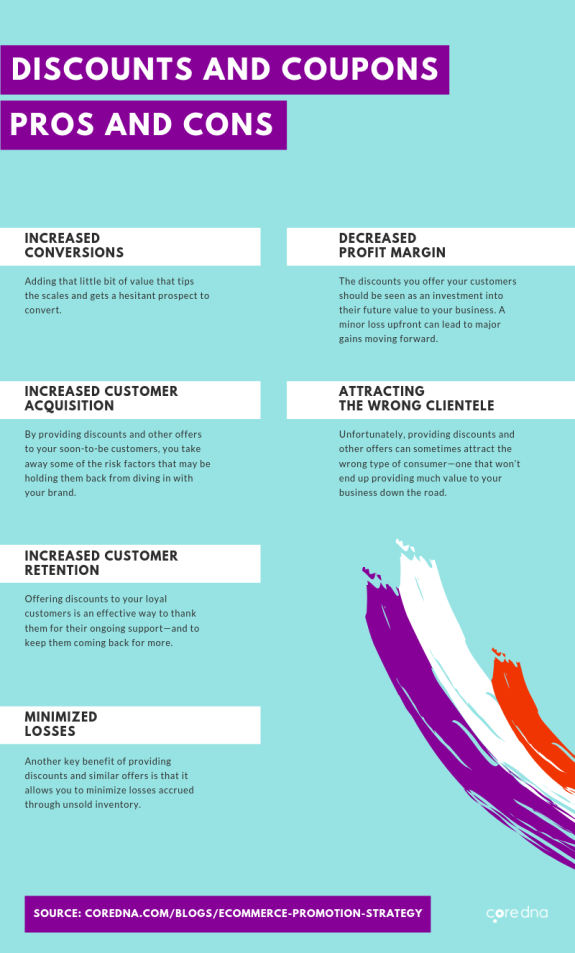
(The pros and cons of running an eCommerce discount and coupon campaign)
Pro #1: Increased conversions
Simply put:
Being provided discounts and promotional offers makes consumers more likely to convert.
As reported by Shopify at Unite 2017, eCommerce vendors that actively provide discount codes to customers are 8x more likely to make a sale than those that don’t. Going along with this, RetailMeNot found that 67% of consumers report making an unanticipated purchase after being presented with a discount offer.
That, right there, is perhaps the main reason to offer a discount in the first place: Adding that little bit of value that tips the scales and gets a hesitant prospect to convert.
Pro #2: Increased customer acquisition
Offering discounts is a key way to attract brand new customers to your brand, as well.
In fact, the survey from RetailMeNot mentioned above also found that 80% of first-time customers report being swayed by a targeted discount of some kind.
By providing discounts and other offers to your soon-to-be customers, you take away some of the risk factors that may be holding them back from diving in with your brand. More than just “taking away” the risk, you actually assume it for your new customers (in that you’re selling at a loss in exchange for their business).
In turn, this helps strengthen the trust these newbies will have in your brand from the get-go—and will set the stage for the long-lasting relationship to come.
Pro #3: Increased customer retention
Speaking of long-lasting relationships, offering discounts to your loyal customers is an effective way to thank them for their ongoing support—and to keep them coming back for more.
As Merkle explains in its 2019 Loyalty Barometer Report, “61% of consumers say that the most important way a brand can interact with them is by surprising them with offers or gifts just for being a customer.”
While this, of course, can be taken to include freebies and other physical gifts, the importance of providing targeted discounts and offers to your most valuable customers cannot be overstated. Whether you do so via structured loyalty programs or on a more sporadic basis, your best customers should be among the first people you think of when creating a new promotional campaign.
Pro #4: Minimized losses
Another key benefit of providing discounts and similar offers is that it allows you to minimize losses accrued through unsold inventory.
We see this all the time in the real world:
- “Year-old” automobile models immediately drop in price once the new model comes up
- Soon-to-expire meat and produce often goes on sale at delis and grocery stores
- Poorly-selling products get offloaded at bargain-basement prices
By offering certain prices at a discount, you can cut your losses—and perhaps recoup some of them, as well. This also allows you to free up precious inventory space, which can then be filled with new and more in-demand products.
Con #1: Decreased profit margin
Obviously, if you’re selling products at a discount, or providing freebies of any kind, you won’t be making as much per transaction as you would by selling at full price.
The goal, then, is to offset this inherent loss to ensure the campaign pays off—both immediately and in the long run.
In terms of immediate returns, the increase in conversions attributed to the promotion will hopefully make up for the temporary decrease in revenue per customer. Ideally, your customers end up spending even more, knowing they’re getting a discounted price on at least some of their purchases.
In terms of your long term strategy, your promotional campaigns should ideally keep your customers onboard well into the future—with or without further promotions being offered to them.
Basically, the discounts you offer your customers should be seen as an investment into their future value to your business. A minor loss upfront can lead to major gains moving forward.
Con #2: Attracting the wrong clientele
Unfortunately, providing discounts and other offers can sometimes attract the wrong type of consumer—one that won’t end up providing much value to your business down the road.
We’re talking about the customers who swoop in to take advantage of any offer they can find, then slink away, only to surface the next time a juicy deal pops up.
(Whew...that was a bit dramatic, wasn’t it?)
All kidding aside, any time you run a promotional campaign, you run the risk of getting taken advantage of in some way. As we’ll discuss in a moment, this is why your campaigns need to be laser-targeted and clearly-defined.
Con #3: Decreased perceived value
While offering sales and discounts once in a while can help spur engagement and conversions, oversaturating your audience with such offers can actually decrease their perceived value of your products—and of brand’s image altogether.
Think of it like this:
If an item is always listed at 50% off, every single time you see it in a certain store, well...it’s pretty obvious that the product isn’t worth the original price in the first place.
Basically, if your customers get used to seeing your products on sale, they’re not even going to think about paying full price for it once a given promotion expires.
Regarding your brand’s image, being too reliant on discounts as a promotional strategy can inadvertently cause your company to appear “cheap” in the eyes of your customer. Without getting too much into a talk on pricing strategy, undercutting your competition through the use of discounts isn’t the best course of action to take—especially on an ongoing basis.
With these pros and cons in mind, let’s now take a look at the key components of an eCommerce promotional offer.
The anatomy of a successful eCommerce discount and coupon marketing campaign
Generally speaking, the structure of most promotional offers seems pretty straightforward:
The customer does X, so they receive Y.
While this may be the gist of the offers we most often come across, a lot goes on behind the scenes that lead a company to provide a specific offer, to a specific audience, at a specific point in time.
Let’s take a look at everything you’ll need to consider when creating a promotional offer.
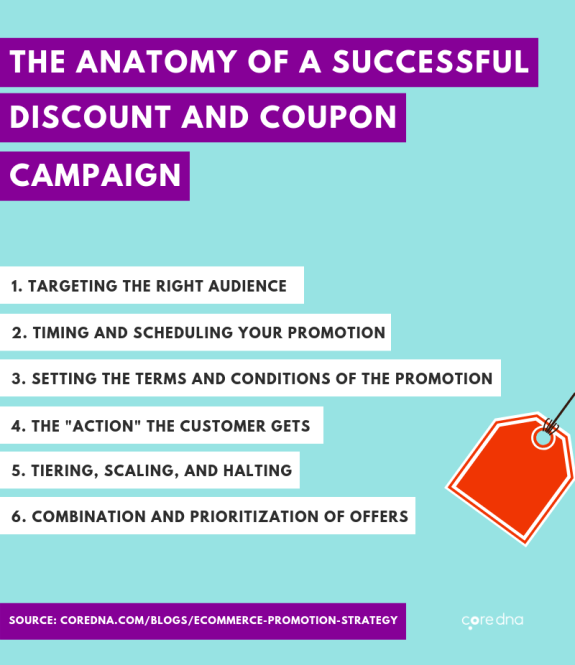
(How to create the best eCommerce discount and coupon marketing campaign)
1. Targeting the right audience
As with all marketing initiatives, you should have a clear idea of who you are targeting with this promotional offer.
Yes, in some cases you will opt to create an audience-wide offer—but that doesn’t mean this option should be your “default” choice. Whether you decide to target your entire audience or just a specific segment, it needs to be a conscious decision based on the goals of the campaign.
Now, this doesn’t necessarily mean you need to exclude those who fall outside of your target audience. For example, while Best Buy’s “Back to School” sale is aimed at high school and college students, the discounts provided are applicable to all Best Buy customers.
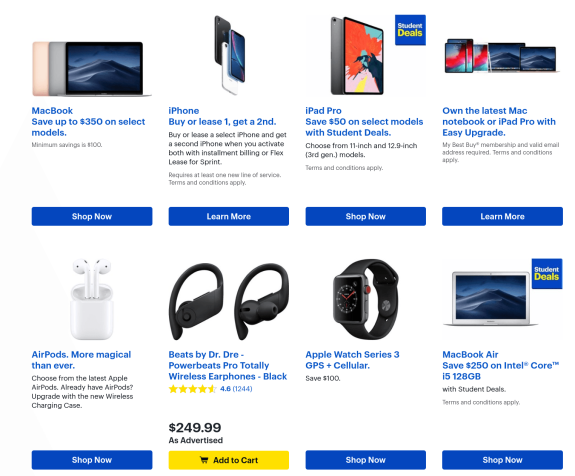
(Best Buy’s “Back to School” sale is aimed at high school and college students | Source)
But, you do have the option of allowing only certain customers to take advantage of a given offer. For example, you might provide ongoing discounts for college students, members of the military, and/or senior citizens.
Or, you may provide specific offers to certain customers based on their overall engagement level. As we’ll discuss later on in this article, providing relevant offers to your first-time patrons, loyal followers, and your nearly-lapsed customers can help nurture them to engage even further with your brand.
2. Timing and scheduling your promotion
In order to optimize audience engagement with your promotional offer, it needs to be presented at a time in which they’re most likely to want to engage with it.
In simple cases, this means taking advantage of events and holidays that often spur conversions. For example, offering a back-to-school sale in July and August just makes sense, as it allows parents to prepare their children for the new school year in September. The same goes for Black Friday and the ensuing holiday season, as well as any other more consumer-heavy time of year.
Timing is important when creating promotional campaigns that aren’t tied to events or holidays, as well. Whether running a two-week campaign or a 24-hour flash sale, it’s vital that you time your promotions strategically in order to maximize engagement.
Again, the timing of a given campaign should always be chosen intentionally, so as to optimize your chances of reaching your overall business goals.
3. Setting the terms and conditions of the promotion
The conditions of an eCommerce promotion serve to explain the offer in full.
Generally, the conditions of a promotion define:
- To whom the offer applies
- What the customer must do to access the offer
- The customer-facing schedule of the promotion
For example, a retailer may offer a 10% discount to first-time customers who purchase $50 or more worth of products by July 31st.
Conditions also dictate any exclusions that may apply, as well. Using the above example, the retailer might include terms stating that certain brands will not be subject to said 10% discount.
Clearly defining your promotion’s conditions is vital, as it allows your customers to know exactly how they can go about taking advantage of your offer. In turn, you’ll be more likely to attract the exact audience you intended to.
4. Actions
Think about the typical offers we see on a daily basis:
- “Buy one, get one free”
- “Register for our mailing list and get 10% off your first purchase”
- “Spend $50 or more to receive free shipping”
The “action” is whatever the customer gets from the company after they’ve fulfilled the conditions of the agreement.
The offer you choose to provide throughout a given promotion should be based on both your customer-facing and business goals. We’ll revisit this in a bit.
5. Tiering, scaling, and halting
Tiers, scaling, and halts are all part of the conditions to be defined when creating an eCommerce promotion.
Tiering refers to the way in which the value of a discount changes based on the amount the customer spends. Pottery Barn uses a tiered approach in the following example:
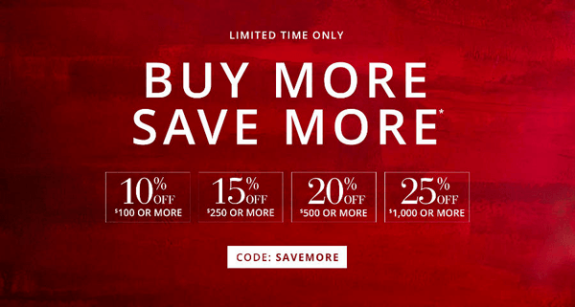
(Pottery Barn uses a tiered discount strategy | Source)
Scaling defines whether an offer can be applied multiple times (either separately or simultaneously), or if it can only be applied to a single purchase per customer.
For example, the offer “Buy one or more x, get 50% off y” means the customer will get only 50% off of the second item, regardless of how many of the first item they buy (as long as they buy one). But, the offer “Buy one x, get 50% off y” means the customer will get 50% off every y item whenever they purchase item x.
Halting places limits on the customer’s ability to “stack” offers past a certain threshold. Using the above example, the company might allow customers to apply the “buy one x, get 50% off y” discount to five purchases of x and y—with the discount no longer applying to the sixth or further purchases.
6. Combination and prioritization of offers
The more promotional campaigns your run, the more likely they are to overlap in some way.
Whenever you have concurrent offers active, it’s vital that you define your terms for combining and prioritizing each.
In setting combination rules for a promotion, you define whether or not a customer can use the applicable offer in conjunction with a different offer you’re currently providing. Typically, the best course of action is to keep promotional offers separate so as to avoid the myriad issues that would otherwise come about.
The next step in this regard is to prioritize each of your active promotions. Basically, you need to define which offer will be applied to a given purchase if more than one offer technically applies.
No matter the case, the offer that takes precedence should always be the one that provides the most value to your customer and best enables you to reach your business goals.
With these facets in mind, let’s now dig into the best practices to follow when creating an eCommerce promotional campaign.
eCommerce coupons & discounts: Best practices
So far throughout this article, we’ve hinted at some of these best practices in more general terms.
Now, let’s get a bit more focused, shall we?

(eCommerce discounts and coupons best practices)
1. Have clear and specific goals in mind
From the moment you start planning a promotional offer, you need to have a clear idea of what you hope to accomplish by doing so.
You never want to offer a discount or any other freebie “just to see if it works.” Such a haphazard approach can lead to a ton of obstacles and pitfalls that just aren’t worth getting into here.
Setting clear goals for a promotional campaign will allow you to narrow down who you intend to target, and how you intend to engage them.
For example, if you’re aiming to acquire new customers, you’d create an offer specifically targeting those who have yet to make their first purchase.
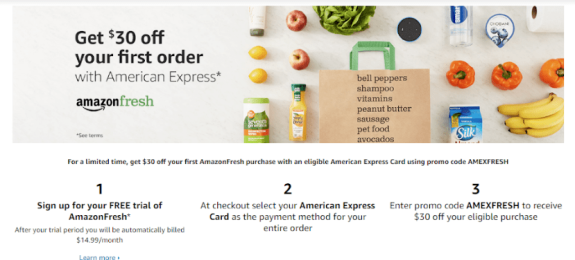
(Amazon targets those who have yet to make their first purchase | Source)
If you’re trying to increase your customers’ average order value, you might provide tiered, threshold-based offers.
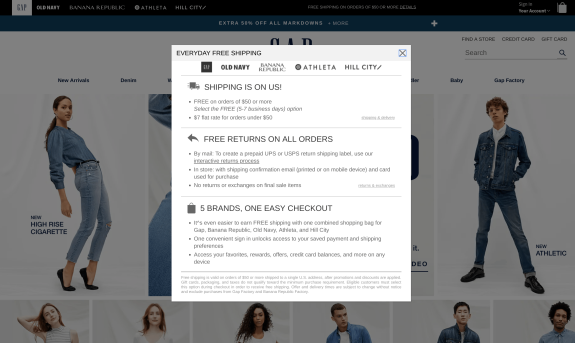
(Gap’s threshold-based offers | Source)
If increased retention and/or purchase frequency is your goal, you might offer your customers a loyalty punch card (physical or digital). The goal, of course, is to keep your customers habitually coming back to your site—and doing so more frequently.
Going a bit further, you might also develop a fully fleshed-out loyalty or membership program, in which customers are incentivized to engage more with—and purchase more from—your brand.
REI’s Co-Op Membership, for example, as taken on a life of its own, enabling the company to even tackle goals outside of the business realm:
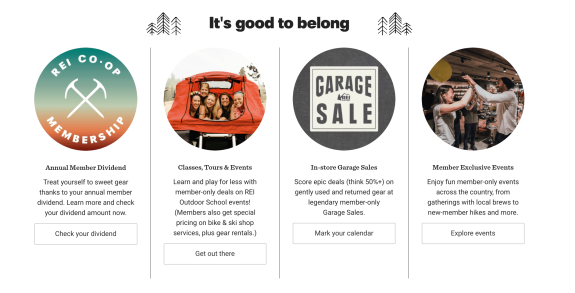
(REI offers membership programs | Source)
By setting a clear purpose for your promotional campaigns and offers, you’ll ensure that both your company and your customers benefit from the engagement.
2. Know your LTV and profit margins
It’s also important to have a clear understanding of the key performance indicators you hope to improve through your promotional campaigns.
Reason being, your goals in these areas will determine the value you offer your customers through a given promotion.
(Remember: Getting your customers engaged in some way is merely a means to your true end; Improving your bottom line.)
Failure to go through this process can be detrimental in one of two ways. On the one hand, providing an offer that’s worth more way more than what you stand to receive from the customer will lead to a loss for your business. On the other hand, providing an offer that’s of little value to your target customers will likely fail to engage them.
That said, it’s vital that you drill down the numbers on every promotional campaign you create to determine the optimal discount or offer to provide.
To illustrate this point, take a look at the following examples:
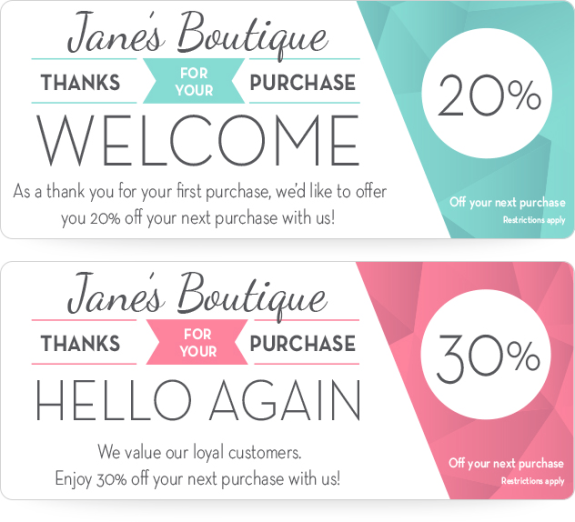
(Jane’s Boutique offers different discounts to different customer segments)
Notice the discrepancy between the amounts offered?
From the customer’s perspective, the value matches the relationship: The new customer will be pleasantly surprised by the generous 20% offer, while the more loyal customer receives a more deserving reward.
For the company, the discount matches the value of the customer to the business: The new customer, with a relatively unknown LTV, receives a smaller incentive than the brand’s more loyal—and more valuable—customers.
Of course, this is just one example of how to match the value of your discount to the value of your customers. And it’s not meant to say that the specific percentages used are the values to use in your own campaigns.
The takeaway is that you need to know exactly where you want your business to be, then determine how to tweak the value your promotional campaigns offer to allow you to reach these goals.
3. Send different discounts and coupons to different customer segments
So far, we’ve talked about the importance of targeting specific customers based on their value and engagement levels.
But, not all those who belong to the same value segment are alike. Your first-time customers from California, for example, maybe nothing like your first-time buyers in New York; each will come to your company with their own set of needs and expectations (and potential future value!).
To be sure, this is only scratching the surface in terms of your individual customers’ differences. The point is, when providing discounts and other offers to your customers, it’s important to take the whole customer into consideration.
You can create deals, discounts or just a free piece of information using tools like Canva’s Coupon Maker. It can help you create eye-catching coupons that represent your brand well and tailor fit them to the needs of your customers with just a few clicks.
Depending on your audience’s specific details, you might decide to create campaigns that offer:
- Discounts on one set of products for a given segment, and a different group of items for another
- Different value discounts based on various factors (such as geographic location, segment AOV, etc.)
- Autonomy, such as a loyalty program with multiple award choices for VIP customers
It’s one thing to present your customers with a generic, store-wide 20% discount that applies to everyone. But, when your individual customer receives an offer for 20% off of the specific products they find most valuable, they’ll appreciate the offer just that much more.
4. Communicate your offer clearly
No matter how enticing your promotional offers are, your customers won’t be able to engage with them if they don’t know they exist.
(Moreover, your customers won’t be likely to engage with your offers if they aren’t accessible, either.)
Going back to precise targeting, you need to ensure you’ve communicated your promotions on the right channels and platforms for the audience you’re aiming to engage.
Three key areas your promotions should be visible include:
- Your eCommerce website
- Your social media profiles
- Your email content
Needless to say, your store’s website is a prime spot to promote your various discounts:
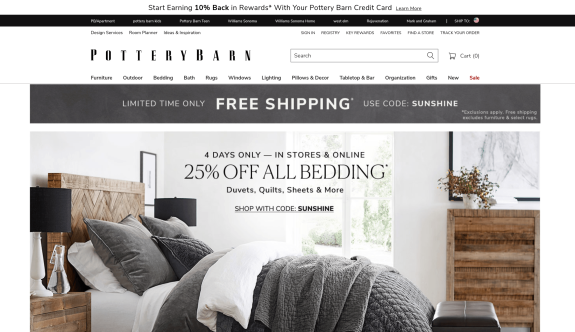
(I spy three offers targeting three different types of customers | Source)
By announcing promotions on your social media pages, you can target those specific audiences—and provide them with offers that will resonate specifically with them.
Whether providing discount codes to your followers, creating PPC ads to provide discounts to lookalike audiences, or partnering with influencers to promote a discount campaign, social media provides a ton of options for your eCommerce company.
Finally, email provides a direct link to your individual customers — allowing you to deliver highly-relevant offers and promotions that provide unique value to each of them.

(Source)
Of course, there are a variety of other ways your brand might engage best with your customers. Your goal is to figure out how to use your audience’s most-used platforms to ensure they not only receive your offer—but can easily take advantage of it.
Of course, there are a variety of other ways your brand might engage best with your customers.
By now, we’ve made it pretty clear that creating effective promotional campaigns is more than just slapping a “10% off” banner on a landing page and seeing what happens.
But, that doesn’t mean you need to reinvent the wheel with every promotion you offer. Before you expend way too much time and energy trying to come up with some unique promotional offer, start with the ones that have already proven to be effective.
Such as…
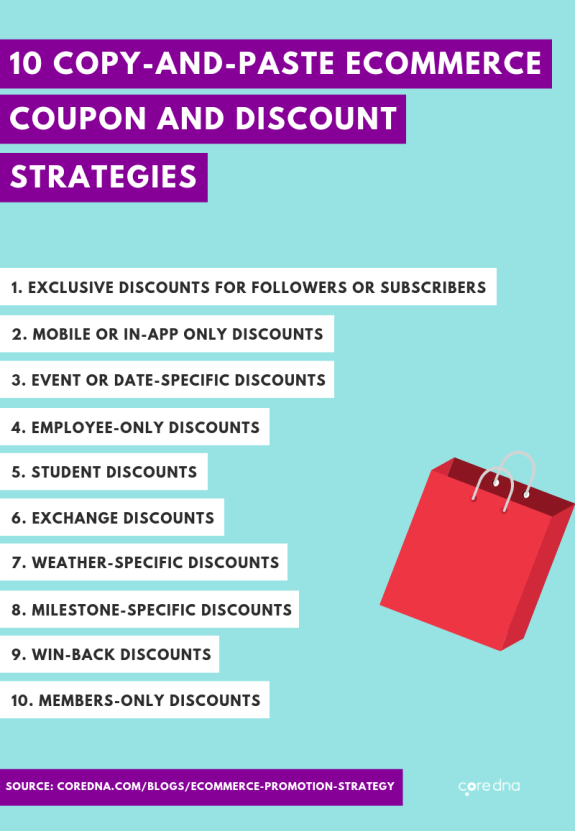
(Copy and paste these eCommerce coupon and discount strategies)
1. Exclusive discounts for followers or subscribers
It’s no secret that most consumers love an exclusive offer.
On top of the actual value of the offer, exclusive discounts and promotions add a sense of belonging to the recipient. Going a step further, consumers who receive such exclusive offers simply for belonging to a certain group will feel that they’ve earned their reward—and will appreciate your brand’s generosity even more.
Providing exclusive deals and discounts also incentivizes new signups, as well. Basically, if your non-followers are aware that they’ll receive extra value from following your page or signing up for your mailing list, they’ll be more likely to do so.
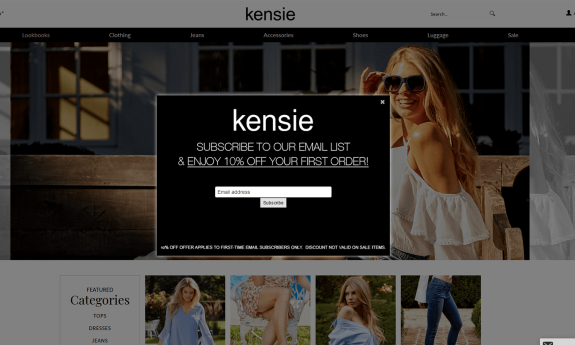
(Kensie’s followers-only discount | Source)
Getting a bit more creative, you might also partner with an influencer, who will provide their followers with a discount code for your products.
As Hugh Beaulac, SMM Manager and Content Strategist at MC2 explains:
“Since 87% of customers say that social media help them decide what to buy and 92% trust word-of-mouth recommendations, it’s a great idea to collaborate with social media niche influencers to share exclusive offers. For example, Velvet Caviar worked with fashion blogger Ellen, also known as Elorabee on Instagram, to give followers a 10% discount with a special code ‘ELLEN’ that gave the brand an opportunity to track ROI for the collaboration. With a more loyal and engaged following, opinion leaders have an influence on the community, so their followers are more likely to make the most out of the deal, and therefore boost your eCommerce sales.”
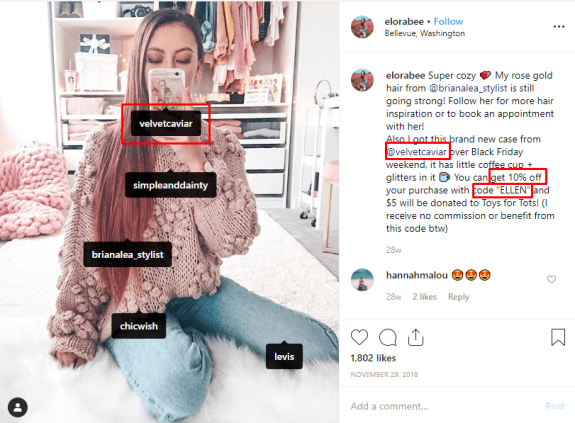
(Velvet Caviar worked with fashion blogger Ellen to give followers a 10% discount | Source)
2. Mobile or in-app only discounts
If your eCommerce company offers an app or a unique mobile experience to your customers, you can use discounts to get target consumers to use the app in the first place.
This, again, involves creating a sense of exclusivity with your promotional offer:

(ASOS' mobile or in-app only discounts Source)
In getting your target audience to download your app, you’re opening the door to myriad possibilities for engaging with them. Aside from direct promotions and sales opportunities, you can use your app to add value to your customers’ overall experience with your brand—making them more likely to stay on board for some time to come.
When offering app-only discounts, it’s essential to showcase this additional value as well as the initial discount offer. While you’ll be using the discount as “bait,” in a sense, you don’t want to have people download the app just to get the discount—only to uninstall the app after taking advantage of your offer.
3. Event or date-specific discounts
Depending on how you look at this tactic, it can be used as another means of promoting exclusivity, or as a way for your brand to cast a wide net.
On the one hand, promotions that revolve around certain events will inherently attract those who attend or celebrate said events. This isn’t a bad thing, of course; it allows you to be laser-focused on your target audience, providing the exact offer you know they’re looking for.
For example, Tivoli Audio offers entrants to the Boston Marathon a discount on headphones and other audio equipment in the days leading up to the big race.
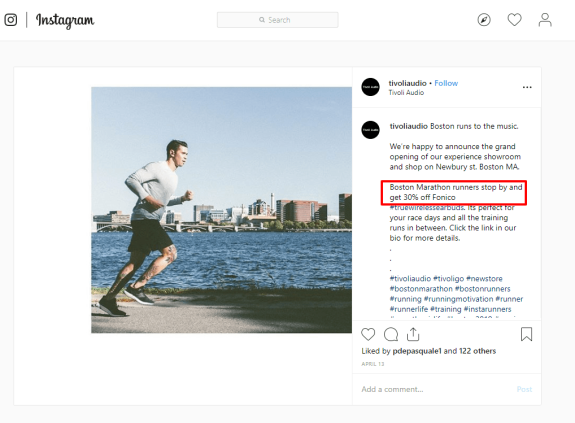
(Tivoli Audio offers an event-specific discount | Source)
Pawel Ogonowski (COO & Co-founder at Growcode) speaks on this idea of building anticipation:
"When you will be thinking about your next huge sale event (like Black Friday), try to come up with ideas that will build anticipation among your audience and give your fans a glimpse of what is to come. Think about how Apple is teasing its audience before any major event or release—a few weeks before the event you know that ‘something is in the air’. Try to become the master of tease just like Apple is. Start building the tension a week or two before the sale event using different media channels—newsletters, social media, display and videos."
4. Employee-only discounts
Let’s not overlook the fact that your best team members can also end up being some of your best customers, too.
Providing rather hefty discounts to your employees can benefit your brand in a number of ways:
First of all, you’ll be generating more business for your company—even if you may not be profiting as much in doing so. As we mentioned earlier, though: any business at all is better than having way too many products taking up valuable inventory space.
Secondly, getting your employees to actually use your products can be huge for social proof. For one, those in your employees’ networks will have more opportunities to see your products “in action.” What’s more, offering your employees such discounts will show your audience you truly value the people who have helped your business grow to what it is.
Stanley-PMI offers a whopping 50% discount to the company’s employees, which is automatically applied to their shopping carts when they log into their accounts.
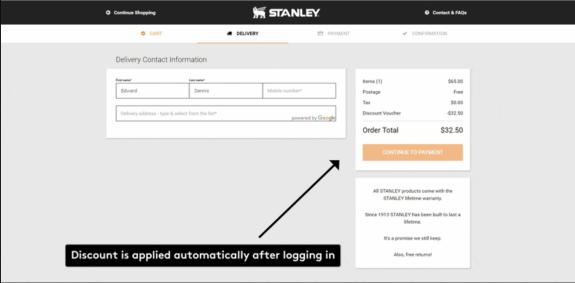
(Stanley-PMI offers employee-only discounts that's applied automatically if they're logged in during the checkout process)
5. Student discounts
It’s pretty well-known that most high school and college kids don’t have all that much cash on hand.
Still, they may need to shell out the cash they do have on some of the products you sell—whether it be school-related equipment, clothing, or bedroom/dorm decor.
So, in an odd twist on exclusivity, you might decide to offer major discounts to your school-aged audience on the basis of them not being able to afford your products at full price.
(Hey, you wouldn’t be the first company to do it.)
Depending on the products you sell and who your audience is, you can take a broad or specific approach, here. For example, if the products you sell are typically used by students in certain educational programs, you can offer discounts to that specific audience. Or, if you sell more general interest items, you can make the discount apply to any student with proper ID.
6. Exchange discounts
If you sell products that routinely become less-valuable (or obsolete) when newer versions or models are released, you’ll want to consider offering ongoing trade-in discounts to your customers.
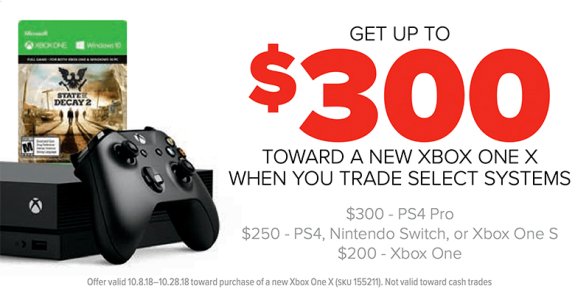
(Offer trade-in discounts to your customers | Source)
Basically, such promotions ensure those who engage with them will continue to do business with your company at least for the foreseeable future. Since the customer receives store credit rather than actual cash, they’ll need to come back to your brand to take advantage of their trade-in.
Moreover, this provides you with the opportunity to refurbish and resell the item being exchanged. While you won’t necessarily make a ton of extra revenue in doing so, you’ll gain more than if you were to simply offer a discount without getting anything in return at all.
7. Weather-specific discounts
Weather-specific discounts are pretty common in the brick-and-mortar realm, as they provide a great way to generate foot traffic from a variety of sources.
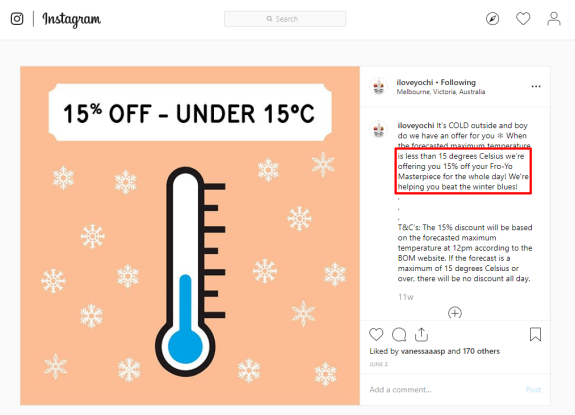
(YO-CHI offers a weather-specific discount)
Through the use of technology, it’s now possible for eCommerce companies to provide weather-specific discounts and promotions to customers all over the world.
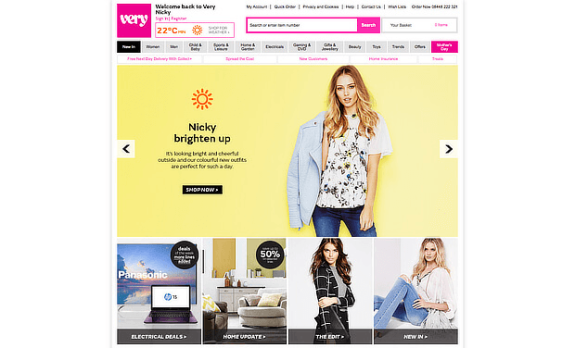
(“It’s getting hot in here” discount | Source)
Of course, you can keep it much more simple, creating promotions that focus on the general climate of the area during a specific season, as well:
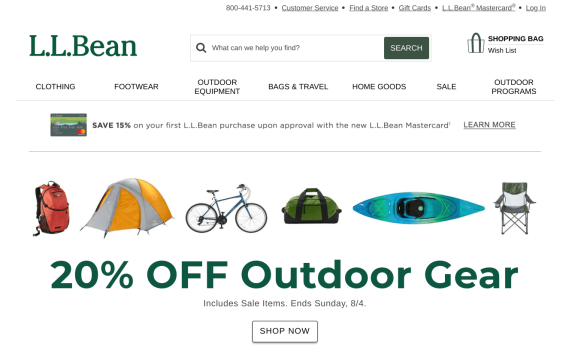
8. Milestone-specific discounts
For eCommerce brands, there’s no shortage of milestones worth celebrating with your customers.
Looking inward, you want to celebrate events such as your company’s anniversary, product release dates, and even anniversaries of branded partnerships.
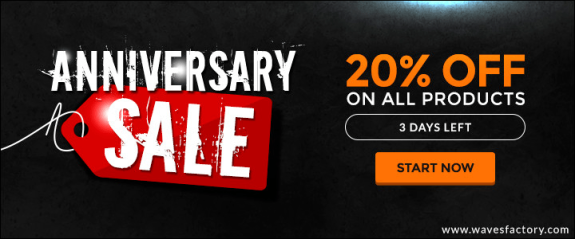
(Anniversary discount | Source)
For your customers, you’ll be celebrating both the passing of time and their accomplishments. Events such as their birthday or anniversary with your brand are definitely worth celebrating—but you also want to call attention to their specific experiences with your brand, as well.
For example, you might send a discount code to your loyalty members once they’ve accumulated a certain number of points throughout their lifetime (even if they’ve “spent” these points already). This will act as a “thank you” for their custom, as well as a reminder that your brand has consistently brought value to the customer’s life.
9. Win-back discounts
If you’re at risk of losing a given customer, a well-timed and delivered discount offer can be just what they need to get back on track.
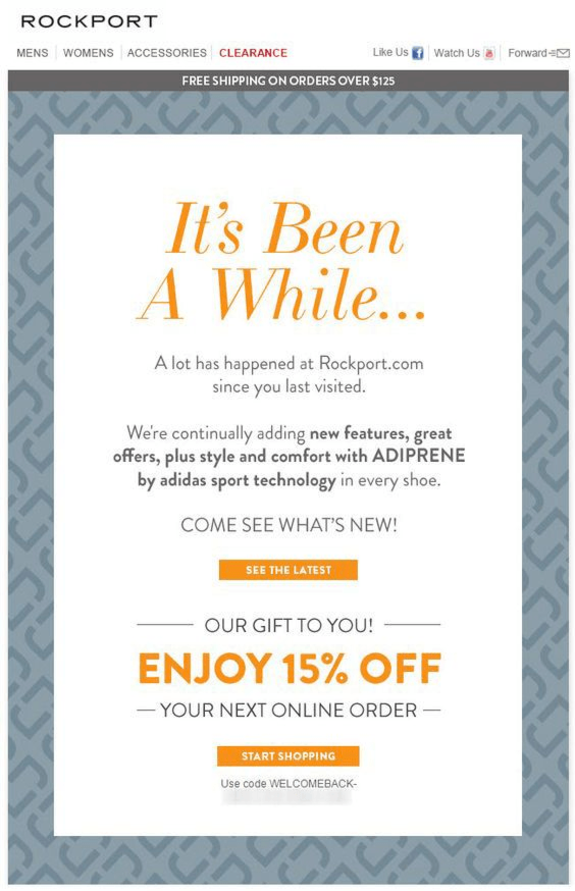
(Get your customers back with win-back discounts | Source)
Now, while you do want to provide a discount or other such offer in your win-back campaigns, you don’t want it to be the sole reason your customers come back one more time. As shown in the example above, you also want to remind your at-risk customers of what they’ve been missing out on—and what they stand to miss out on in the future.
10. Members-only discounts
We talked before about providing exclusive discounts to your social media following and mailing list subscribers.
But you can take this idea even further by creating membership programs in which subscribers pay a fee to be privy to certain deals, discounts, and other benefits.
For example, REI’s Co-Op Membership program provides a ton of value to its members:

(REI offers members-only discount | Source)
You can go even further and create tiered membership levels, allowing you to provide different discounts and offers to each audience accordingly. Remember: While you do want to provide top-notch value through your promotions and discounts, you don’t want to give away too much without getting value back in return.
Wrapping up
Providing your customers with discounts and other promotional offers isn’t a new marketing tactic by any stretch.
And, rest assured, it’s still as effective a tactic as ever.
Again, though:
Your promotional eCommerce campaigns will only be effective if they are tailored to your audience’s expectations—as well as your company’s overall business goals.
Keep these two things in mind, and your promotional campaigns will continue to lead to major growth for your brand.






